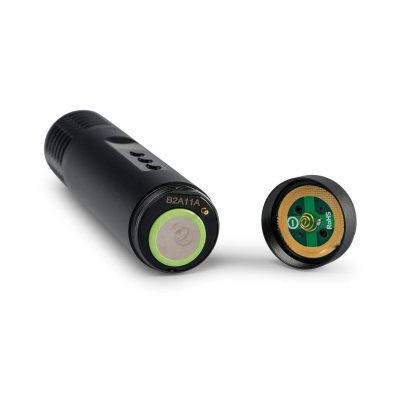How to Guides
18650 vs. 26650 Batteries: What’s the Difference?
 When it comes to rechargeable batteries, two of the most commonly used sizes are the 18650 and 26650. These batteries are widely used in various devices, including flashlights, laptops, power banks, and e-cigarettes. However, despite their similarities, there are significant differences between the two. In this article, we’ll delve into the differences between 18650 and 26650 batteries and explain why some manufacturers have started to shift towards the latter.
When it comes to rechargeable batteries, two of the most commonly used sizes are the 18650 and 26650. These batteries are widely used in various devices, including flashlights, laptops, power banks, and e-cigarettes. However, despite their similarities, there are significant differences between the two. In this article, we’ll delve into the differences between 18650 and 26650 batteries and explain why some manufacturers have started to shift towards the latter.
18650 Batteries: An Overview
The 18650 battery, as its name suggests, has a diameter of 18mm and a length of 65mm. It was first introduced by Sony in 1991, and it quickly gained popularity due to its high energy density and long cycle life. The 18650 battery is a lithium-ion battery, which means it uses lithium ions to store and release energy. It has a nominal voltage of 3.7 volts and a typical capacity of 2200mAh to 3500mAh, although some models can go as high as 5000mAh.
26650 Batteries: An Overview
The 26650 battery, on the other hand, has a diameter of 26mm and a length of 65mm. It was introduced later than the 18650 battery, in 2009, by A123 Systems. The 26650 battery is also a lithium-ion battery, but it has a larger capacity and can deliver more power than the 18650. It has a nominal voltage of 3.7 volts and a typical capacity of 3000mAh to 5500mAh, although some models can go as high as 7000mAh.
Differences between 18650 and 26650 Batteries
The main differences between the two batteries are their size, capacity, and maximum discharge current. The 26650 battery is larger than the 18650, which means it can hold more charge and deliver more power. This makes it ideal for devices that require high current draw, such as power tools and electric vehicles. The 18650 battery, on the other hand, is more suitable for devices that require a smaller form factor, such as flashlights and e-cigarettes.
Another significant difference between the two batteries is their capacity. The 26650 battery has a larger capacity than the 18650, which means it can hold more charge and deliver power for a more extended period. This makes it ideal for devices that require high energy consumption, such as electric cars and solar power storage systems. However, the larger capacity also means that the 26650 battery is typically more expensive than the 18650 battery.
Finally, the maximum discharge current of the two batteries also differs. The 26650 battery has a higher maximum discharge current than the 18650, which means it can deliver more power in a shorter time. This makes it ideal for devices that require high bursts of power, such as electric cars and power tools.
Why Some Manufacturers Prefer 26650 Batteries
In recent years, some manufacturers have started to shift towards using 26650 batteries instead of 18650 batteries. One of the main reasons for this is that the larger size and capacity of the 26650 battery make it more suitable for devices that require high energy consumption. For example, Arizer, a manufacturer of high-end vaporizers, has started to use 26650 batteries in their products like the Arizer Air Max. The larger capacity of these batteries means that their vaporizers can deliver more power and last longer between charges.
Another reason why some manufacturers prefer 26650 batteries is that they can provide more power in a shorter time. This is important for devices that require high bursts of power, such as electric cars.
- Quality of S&B Volcano Bags - May 9, 2024
- Arizer Ascends: Why I Abandoned Tiny Might and Firefly 2 - May 8, 2024
- Why I switched to a Concentrate Vaporizer in 2024! - May 8, 2024

